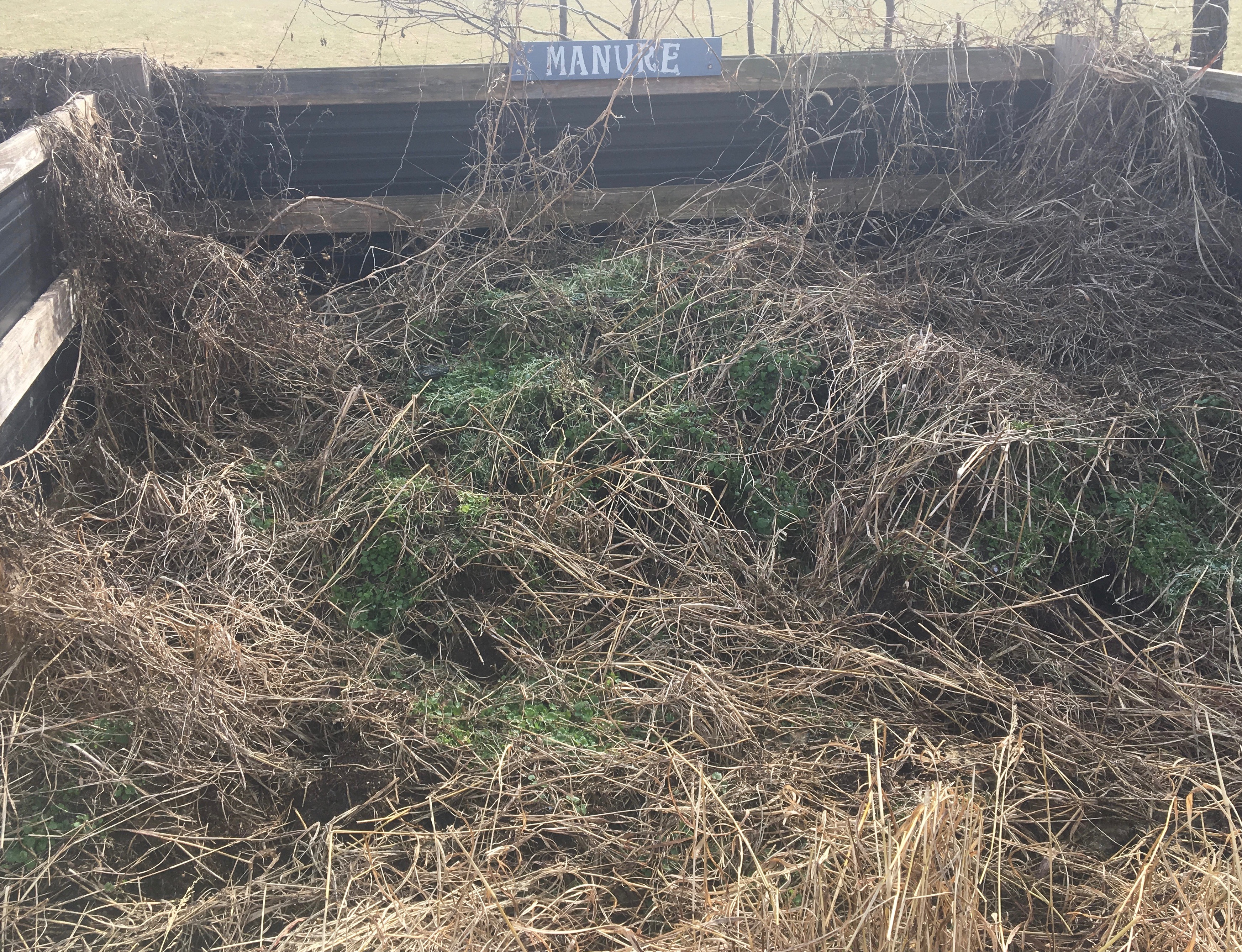Animal manure has been used in vegetable gardens for centuries, right? Back when people rode horses and families kept milk cows, animal manures were a natural source of fertilizer for home gardens. Today, publicity about E. coli outbreaks have made people more aware of the risk of food-borne illness and many are now questioning the safety of using animal manure on food crops, including one Farmcolony neighbor who raised the issue as we were digging out straw and manure from the goat shed. Several of us wanted to take the droppings to the garden, but she resisted.
“Animal manure can make people sick,” she insisted as we discussed where and how to dispose of the droppings. “I don’t want to eat greens that have been exposed to manure,” she added.
Is she right? Does animal manure contain dangerous pathogens that put us at risk? Should it be used in the garden, or not? Here are the facts.
“Pathogens (microorganisms which cause disease) can be transferred from animal manures to humans. The pathogens salmonella, listeria, and E.coli 0157:H7, as well as parasites, such as roundworms and tapeworms, have been linked to applications of manure to gardens,” noted Van Bobbitt and Dr. Val Hillers of Washington State University Extension in an article in The Spruce.
“Animal manure can contain bacteria such as Listeria, Salmonella, and E. coli 0157:H7, as well as roundworms and tapeworms…Pathogens can pass from animal manure to humans through direct contact between contaminated manure and fresh fruit and vegetables,” according to a “Guidelines for Using Manure on Vegetable Gardens,” a fact sheet from the University of Minnesota Extension office.
“Animal manures harbor pathogens harmful to humans, including E. coli, Salmonella, and Campylobacter bacteria, and Giardia or Cryptosporidium protozoa. These organisms can affect people when they consume crops contaminated with soil, and under certain conditions, they can be taken up into plant tissue,” confirms the University of Maine Cooperative Extension county office in its “Bulletin #2510, Guidelines for Using Manure on Vegetable Gardens.”
So science confirms it. The risk of contamination from disease-causing pathogens in animal manure, particularly fresh manure, where food crops are grown is real.
Yet gardeners for centuries have enjoyed the benefits of using manure in the garden. It is well documented that manure is packed with nutrients that plants need, like nitrogen. Manure enriches the soil, which in turn, helps the plants. There are numerous other known benefits of using manure in the garden as well.
Farmcolony has a ready supply of animal manures on the farm from the goats, chickens and horses that reside here. Does the threat of food borne illnesses limit us from using this rich resource to feed our garden? Not necessarily. Science also shows us that animal manure can be used safely if certain application guidelines are followed. Here are guidelines for using animal manure in gardens outlined by the University of Maine County Extension Office in its Bulletin 2510:
- Apply raw manure at least 120 days before harvesting a crop that has the potential for soil contact (leafy greens, root crops, etc). The USDA National Organic Program (NOP) standards allow a 90-day period between manure application and harvest for crops that don’t have direct contact potential with soil (tomatoes, corn).
- For some gardeners, the best time to apply raw manure to your garden may be in the fall after harvest; incorporate it into the soil and plant a cover crop to hold nutrients over the winter.
- Never use raw manure as a side dress to growing plants. Manure that is incorporated and distributed throughout the soil has a much lower risk of passing pathogens to the growing crop.
- Consider the source if you still want to use raw manures in your garden. Are the animals in the herd or flock healthy? Is there a parasite problem that requires regular deworming? Does the farm use antibiotics as a regular component of their feeding program?
- Use composted manure. Composting manure with your yard and garden waste helps reduce the risk of contaminating your garden vegetables with pathogens. Ensuring that your compost pile reaches a temperature of 140°F will further reduce the risk. Commercially processed manure, available in garden centers, should indicate on the package if it is pathogen-free.
- Never use cat, dog, or pig manure in vegetable gardens or compost piles. Parasites that may be in these types of manure are more likely to survive and infect people than those in other types of manure. It is also important to keep your pets out of your vegetable garden.
- Use water that meets safe drinking standards to irrigate your vegetables. This is most important within one month of harvest. If you use any water that is not drinkable (potable), such as water from old dug wells or rain barrels, to irrigate your garden, it is best to use drip (trickle) irrigation to both conserve water and minimize the contamination of leafy vegetables that can occur with overhead irrigation.
In short, the University of Maine recommends adding raw animal manure to the garden no less than 120 days prior to planting of leafy vegetables and 90 days prior with plants that don’t have direct contact with the soil, such as tomatoes or corn. By then the manure will have decomposed and Salmonella, E. coli bacteria and other pathogens in the manure will be eradicated by time, exposure and soil-dwelling microbes.
The extension office also suggests composting manure to eliminate harmful pathogens found in manure. In recent years, for one reason or another, there has been little composting effort on the farm. Perhaps that is due to the complexity of composting.
Scientists say the safest approach is to compost manure until it heats up, either by itself or combined with other materials. To ensure that pathogens have been killed, the compost pile must reach a high temperature (between 131°F and 140°F) for a sustained period of time (several weeks). The compost must also be turned regularly and carefully monitored so that all of the manure has been exposed to sufficient temperatures.
The risk from pathogens is greatly reduced when manure is composted correctly, but be warned. In home compost piles and in unmanaged manure piles, this rarely happens. Aged manure is not the same as composted manure, and it is not safe to assume that pathogens in an aged manure pile have been destroyed.
“If you don’t know what you’re doing with composting you might as well not be composting at all,” warns Jeff Gillman, an associate professor of horticultural science at the University of Minnesota, and the author of “The Truth About Organic Gardening.”
Considering the complexity of composting manure thoroughly enough to ensure pathogens are destroyed, perhaps the best practice for safely incorporating animal manure into the garden at Farmcolony is simply to follow the guidelines as suggested by the extension office:
- Incorporate animal manure into the garden soil at least 120 days before the planting of leafy vegetables.
- Incorporate animal manure into the garden soil at least 90 days prior with plants that don’t have direct contact with the soil, such as tomatoes or corn.
Inarguably, animal manures are excellent soil amendments for the vegetable garden, but there are potential health risks associated with using manures and manure-based composts. With some simple precautions, we can reduce those health risks. Chickens, goats and horses on the farm provide us with a ready supply of soil-enriching, natural fertilizer. With proper use, we can enjoy the numerous benefits of using manure in the garden while minimizing the disease-causing pathogens in animal manure that put us at risk.


